
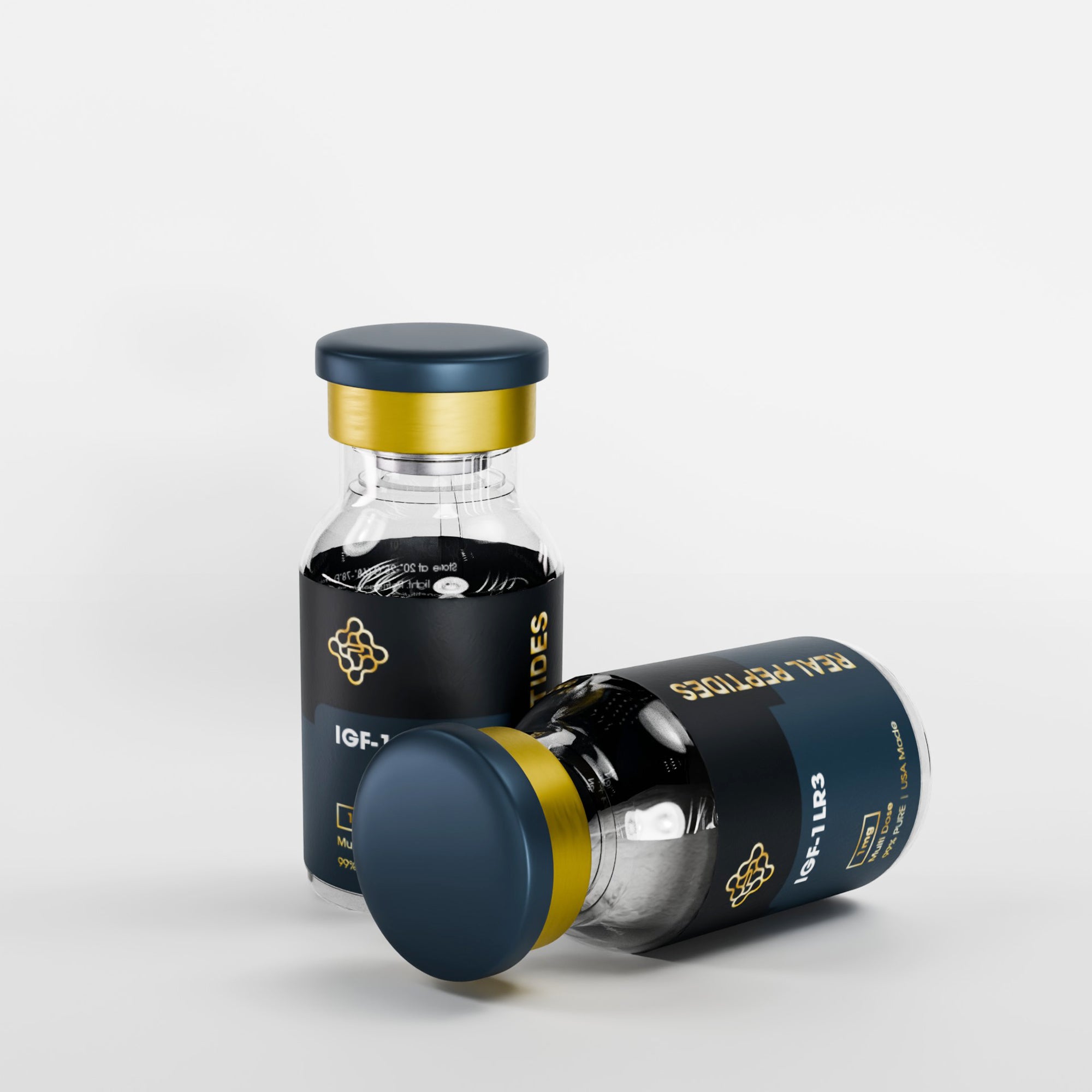
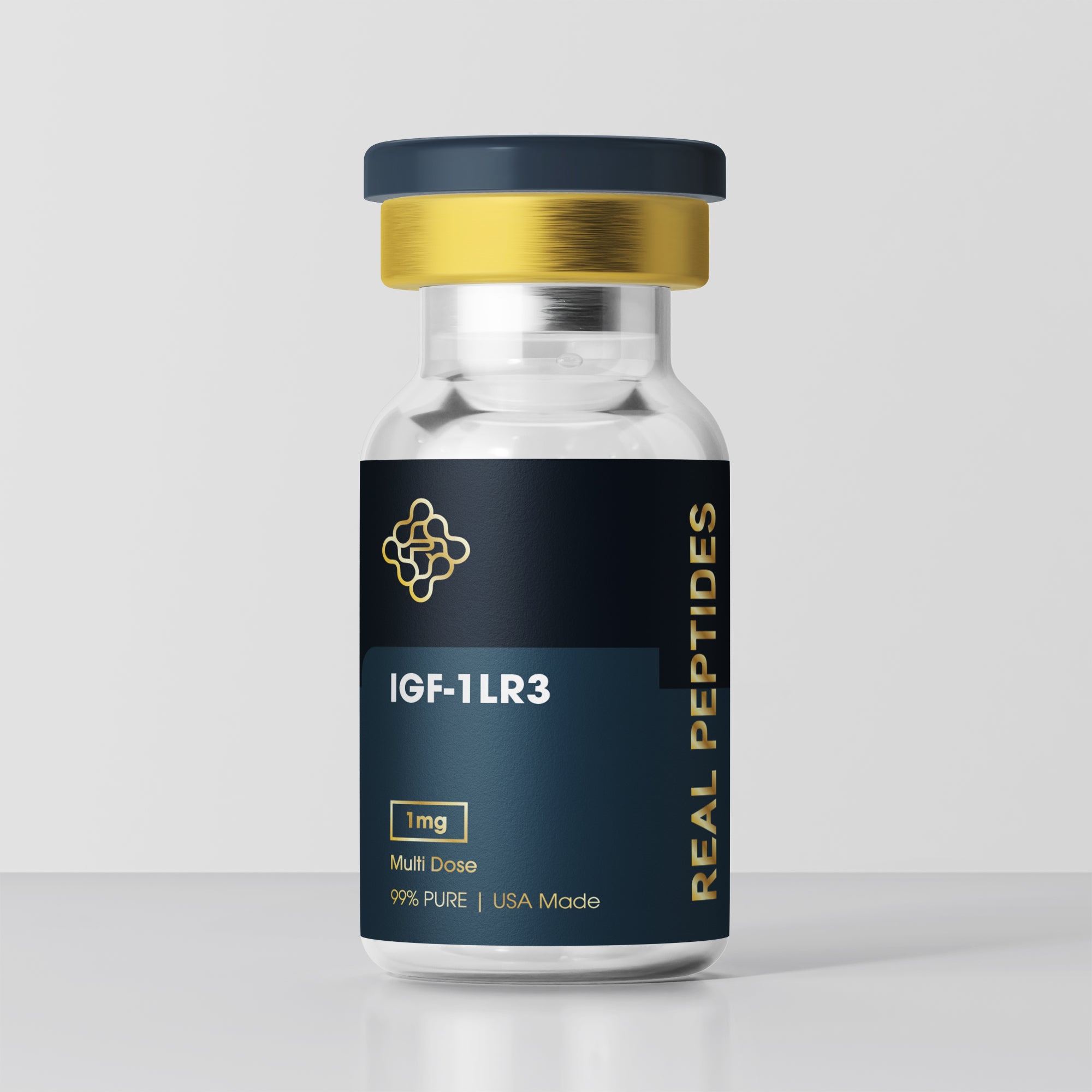

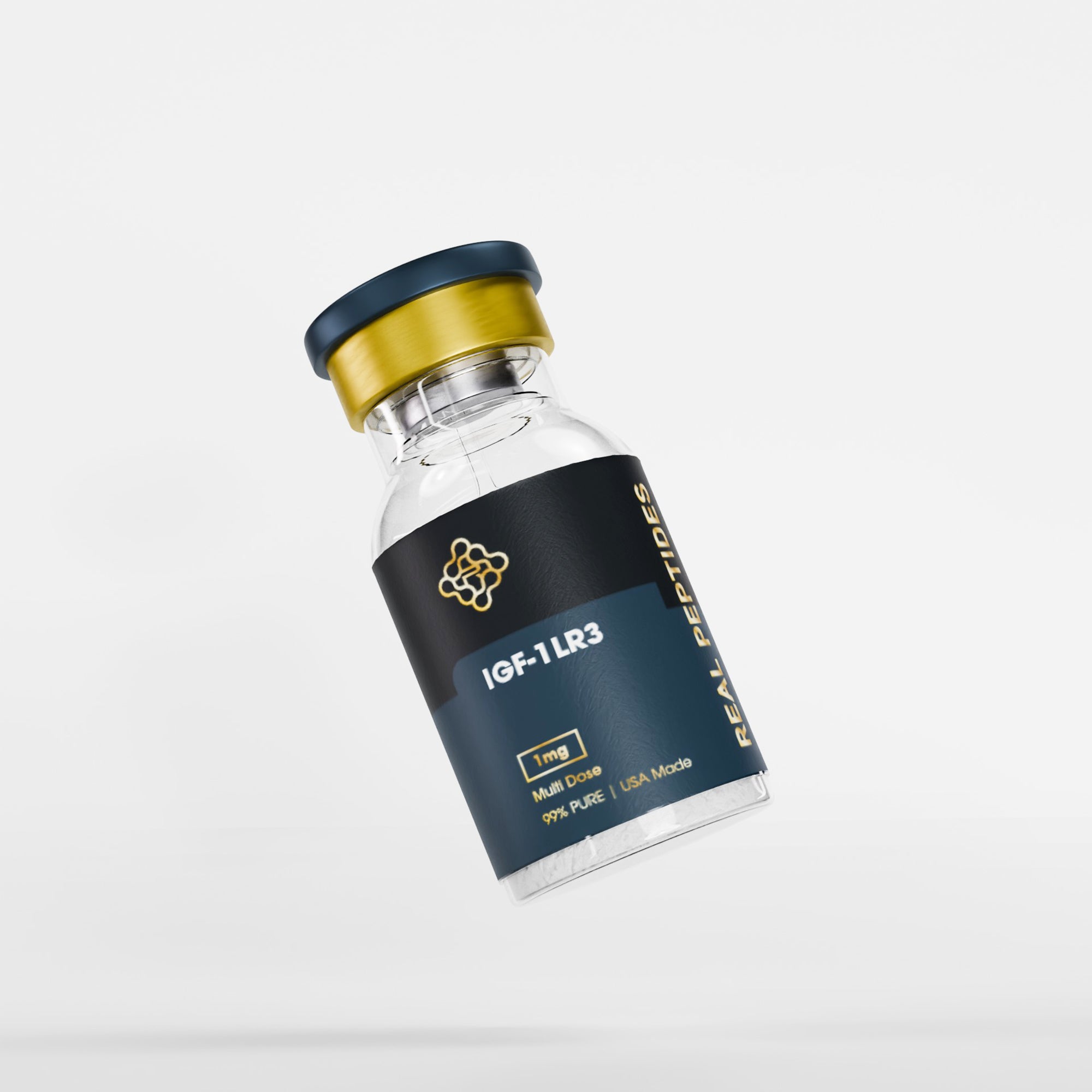


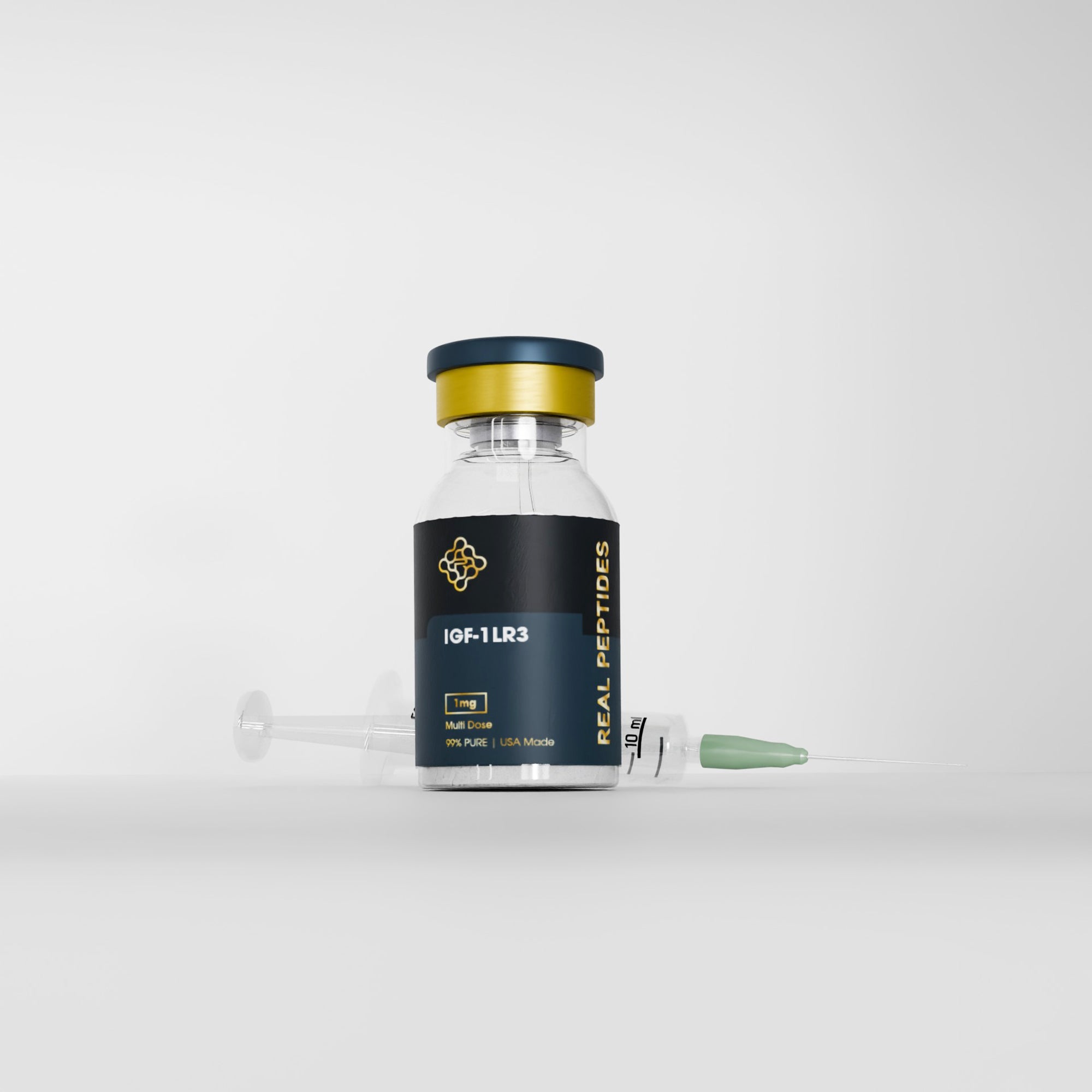
In Stock, Ready to Ship!
$40.00 – $90.00Price range: $40.00 through $90.00 — or subscribe and save 20%
99% Pure | USA Made | Multi DoseIGF-1 LR3 is a long-acting analog of insulin-like growth factor-1 (IGF-1) engineered for extended receptor binding and enhanced bioactivity. Ideal for labs probing cell proliferation, protein synthesis, and metabolic regulation, IGF-1 LR3 delivers sustained IGF-1 receptor activation in both cell-culture and small-animal models. Each 1 mg vial is USA-manufactured, HPLC-verified to ≥ 99% purity, and endotoxin-screened (< 0.1 EU/mg), ensuring reproducible, high-precision data for your IGF-1 research.

Peptides are not ready to use. Must purchase BAC water for reconstitution.
KEY HIGHLIGHTS


IGF-1 LR3 is a synthetic analog of human insulin-like growth factor-1 in which the first three amino acids are removed and an arginine added at position 3. This modification greatly extends its half-life and receptor affinity. In research settings, IGF-1 LR3 is used to examine IGF-1 receptor dynamics, anabolic signaling, and metabolic regulation with greater temporal control than native IGF-1.
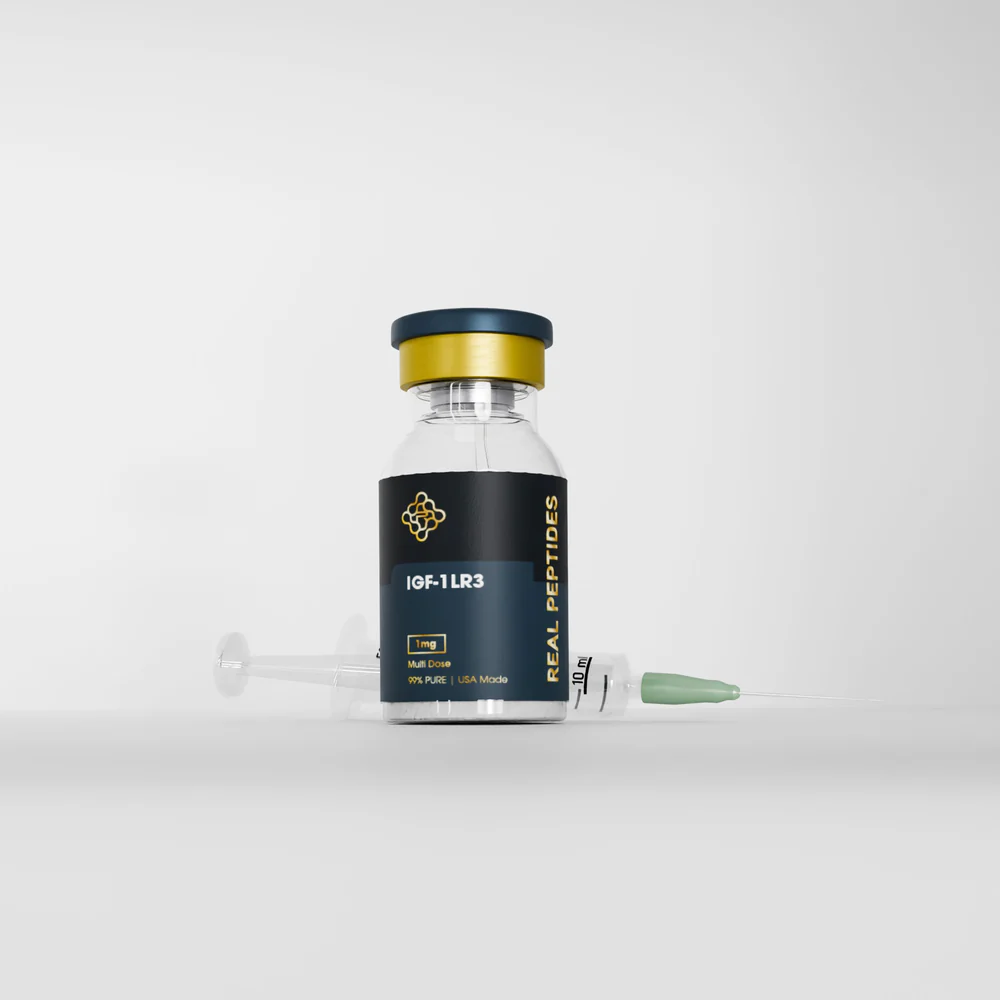

Researchers select IGF-1 LR3 when they require prolonged and potent IGF-1 activity without rapid degradation. Its enhanced stability and high receptor affinity produce consistent activation of downstream pathways—mTOR, MAPK, and PI3K/Akt—critical for studies of cell proliferation, protein synthesis, and glucose metabolism. Manufactured under ISO-certified conditions and verified to ≥ 99% purity, IGF-1 LR3 ensures rigorous reproducibility across both in vitro and in vivo protocols.
Unlike native IGF-1, IGF-1 LR3’s structural tweaks confer a three- to five-fold longer half-life and increased receptor binding, making it uniquely suited for sustained signaling experiments. Its ability to maintain elevated IGF-1 levels for over 24 hours in animal models eliminates the need for multiple daily doses, simplifying study design and reducing variability. This precision makes IGF-1 LR3 the go-to reagent for high-impact anabolic and metabolic-pathway research.
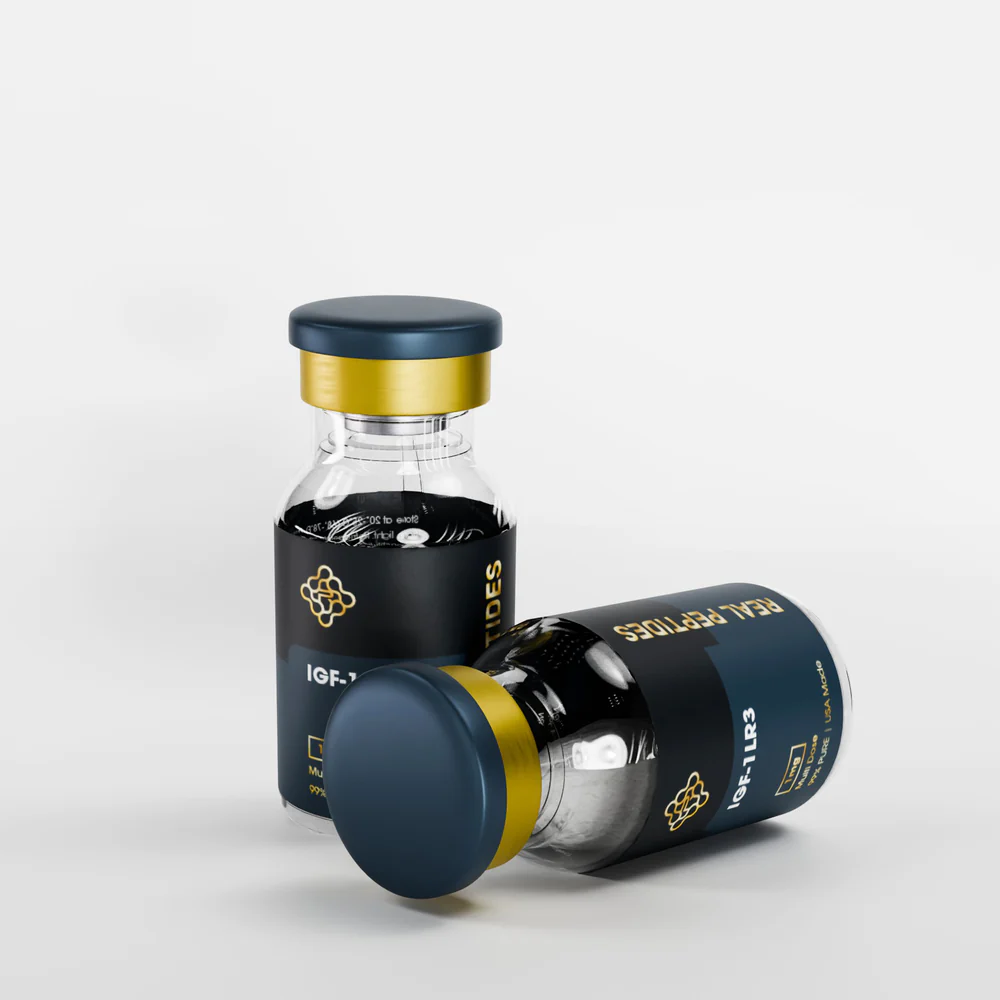
Don't hestitate to contact us
End of Content.